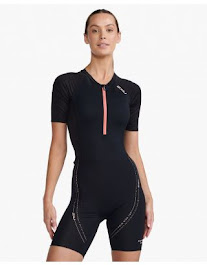Swimming Wetsuit vs. Triathlon Wetsuit: What's the Difference?
You're gearing up for your first triathlon. You've got your running shoes, your bike, and your swim gear. But you're not sure what kind of wetsuit to buy. Do you need a swimming wetsuit or a triathlon wetsuit?
Don't worry, we're here to help. In this article, we'll explain the difference between swimming wetsuits and triathlon wetsuits. We'll also help you decide which type of wetsuit is right for you.
What Is a Swimming Wetsuit?
A swimming wetsuit is a piece of clothing worn by swimmers to keep them warm in the water. It is usually made of neoprene, a synthetic rubber, which helps to insulate the swimmer and keep them warm. Wetsuits can also help protect swimmers from the sun.
Swimming wetsuits are most commonly used in cold climates or in competitions where the water is cold. They can be worn by both men and women, and are available in a variety of styles and colors.
What Is a Triathlon Wetsuit?
A triathlon wetsuit men’s and women’s is a specialized suit made for swimming in triathlons. Unlike a swimming wetsuit, a triathlon wetsuit is designed to make you more buoyant in the water and to help you move more quickly through the water.
Triathlon wetsuits are typically made from neoprene, which is a thick, rubbery
material. They are often brightly colored and have bold patterns or designs on them. Triathlon wetsuits are also typically more expensive than swimming wetsuits.
Materials Used for Swimming Wetsuits vs. Triathlon Wetsuits
Swimming wetsuits and triathlon wetsuits are made from different materials, and this is what distinguishes them from each other.
Swimming wetsuits are made of neoprene, while triathlon wetsuits are made of elastane. Neoprene is a thick, rubbery material that provides insulation and buoyancy, while elastane is a thin, stretchy material that allows freedom of movement.
This is why swimming wetsuits are not as popular as triathlon wetsuits. They are less flexible and do not fit as well, which can impact your performance in the water.
Tips on Caring for a Swimming or Triathlon Wetsuit
Here are some tips on how to take care of your swimming or triathlon wetsuit so that it lasts longer:
- Rinse it with fresh water as soon as you can after each use, even if you're just going to clean it properly later. This will help to get rid of any salt, chlorine, or other chemicals that can damage the material.
- Hang it up to dry in a cool, dark place. Avoid direct sunlight or heat, as this can also damage the wetsuit.
- If you need to wash it, use a mild soap and avoid detergents or fabric softeners. Rinse it thoroughly afterward.
- Don't store it wet in a plastic bag, as this can cause mold and mildew to grow.
- Inspect your wetsuit regularly for signs of wear and tear, and repair any damage as soon as possible.
Conclusion
So, if you're looking for a wetsuit to take on your next triathlon, what should you look for?
In general, triathlon wetsuits are designed to be a little more flexible and to provide more coverage than swimming wetsuits. They also have a thicker neoprene to provide more warmth and buoyancy in the water. If you're looking for a triathlon wetsuit men’s and women, make sure to choose one that is specifically designed for the activity—not all wetsuits are created equal!
Visit Website.




Comments
Post a Comment